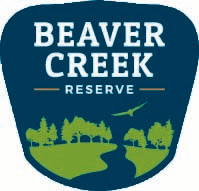By Christy Thomas and Brianne Markin
When you think about butterflies, the majestic Monarch is probably one of the first species to come to mind. For years, efforts to educate the public on the protection and of Monarchs have been successful, especially here at Beaver Creek Reserve. Each year we raise between 400-1000 monarchs from eggs in our caterpillar lab. However, there is still much work to be done. Despite a surge in population growth from 2013 - 2016, the population has declined again in the past two years. For more information relating to the Monarch visit JourneyNorth.org or visit the Butterfly House at Beaver Creek Reserve which opens July 5th.
While the Monarch is a butterfly species of concern, it is not the only one. The Karner blue (Lycaeides melissa samuelis) is another, even more, threatened species for us to monitor and protect. The Karner blue has been on the endangered species list since 1992 after a sharp increase in the destruction of their habitats by agricultural, residential, and commercial development.
Similar to the Monarch butterfly, Karner blue caterpillars have a specific host plant. This means that there is only one plant that the caterpillars will feed on. For Monarchs this is milkweed. For the Karner blue this is lupine. Wild lupine, currently in bloom at Beaver Creek Reserve, is most often found in open prairies, savannas, and barrens. These areas have been highly affected by development. Without the host plant, the caterpillars cannot survive.
The Karner blue is a small butterfly, —only about the size of a nickel. They show varying shades of blue, silver, and brown on top of their wings, and characteristic orange crescents spot the underside of their fore- and hind- wings. See images at left.
However, in Wisconsin, we are lucky enough to have the largest population of Karner blue than anywhere else in the world. With that privilege comes a responsibility to invest in their continuation and encourage their growth. Across Central and Northwestern Wisconsin, recovery properties have been created to preserve habitats and monitor the Karner blue populations. The U.S Fish and Wildlife Service created a recovery plan for the Karner blue that has set goals to reclassify the Karner blue from endangered to threatened by increasing the species populations. The individual states that are home to the dwindling Karner populations, including Wisconsin, each have individual plans and goals to grow and protect the populations. (See Karner blue range map at bottom of page)
 |
| Monitors conducting a Karner Blue Survey 2013 |
 |
| Karner blue butterfly Range Map, 2013 |
So what can you do? Similar to the work being done to bolster the Monarch populations, there are many citizen science projects operating across Wisconsin. Visit https://dnr.wi.gov/topic/Endangeredresources/karner/volunteer.html for more information. One important step would be to protect and plant Wild Lupine. Beaver Creek Reserve sells lupine at our annual Native Plant Sale, which is always the Saturday of Mother’s Day weekend. When shopping for wild lupine beware of invasive hybrids online and in retail greenhouses. You can also attend a Karner blue survey training. More information is available at the link above.

